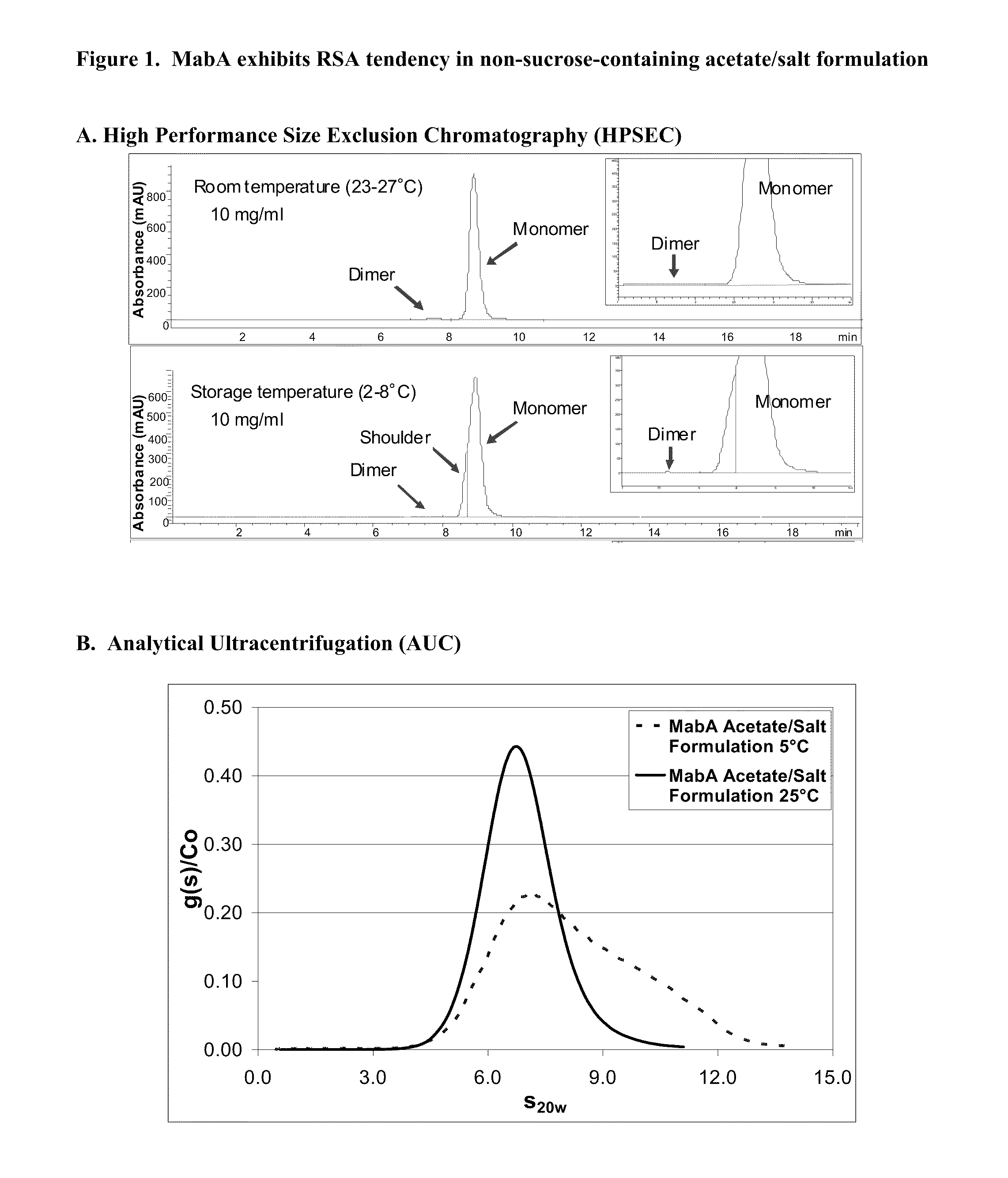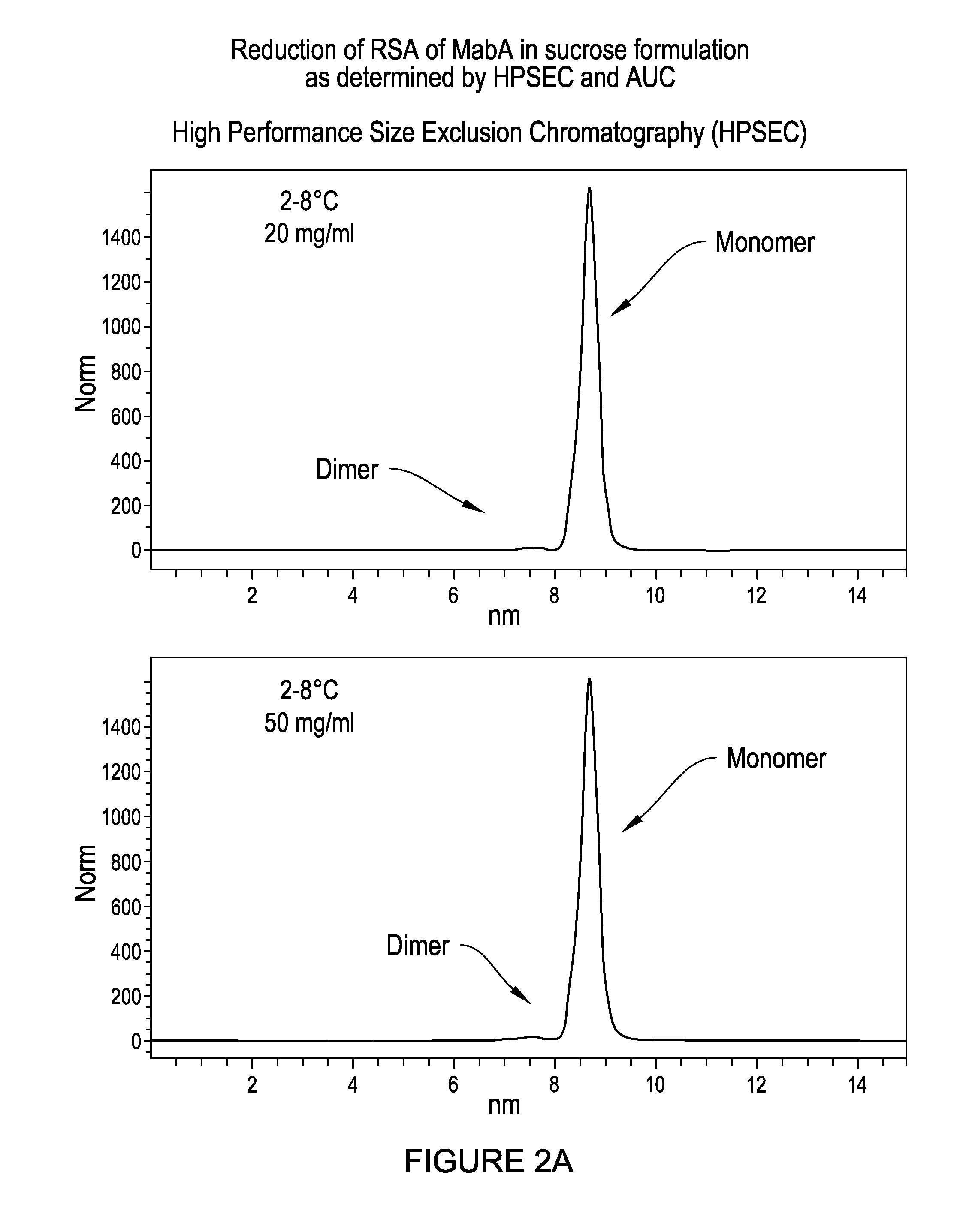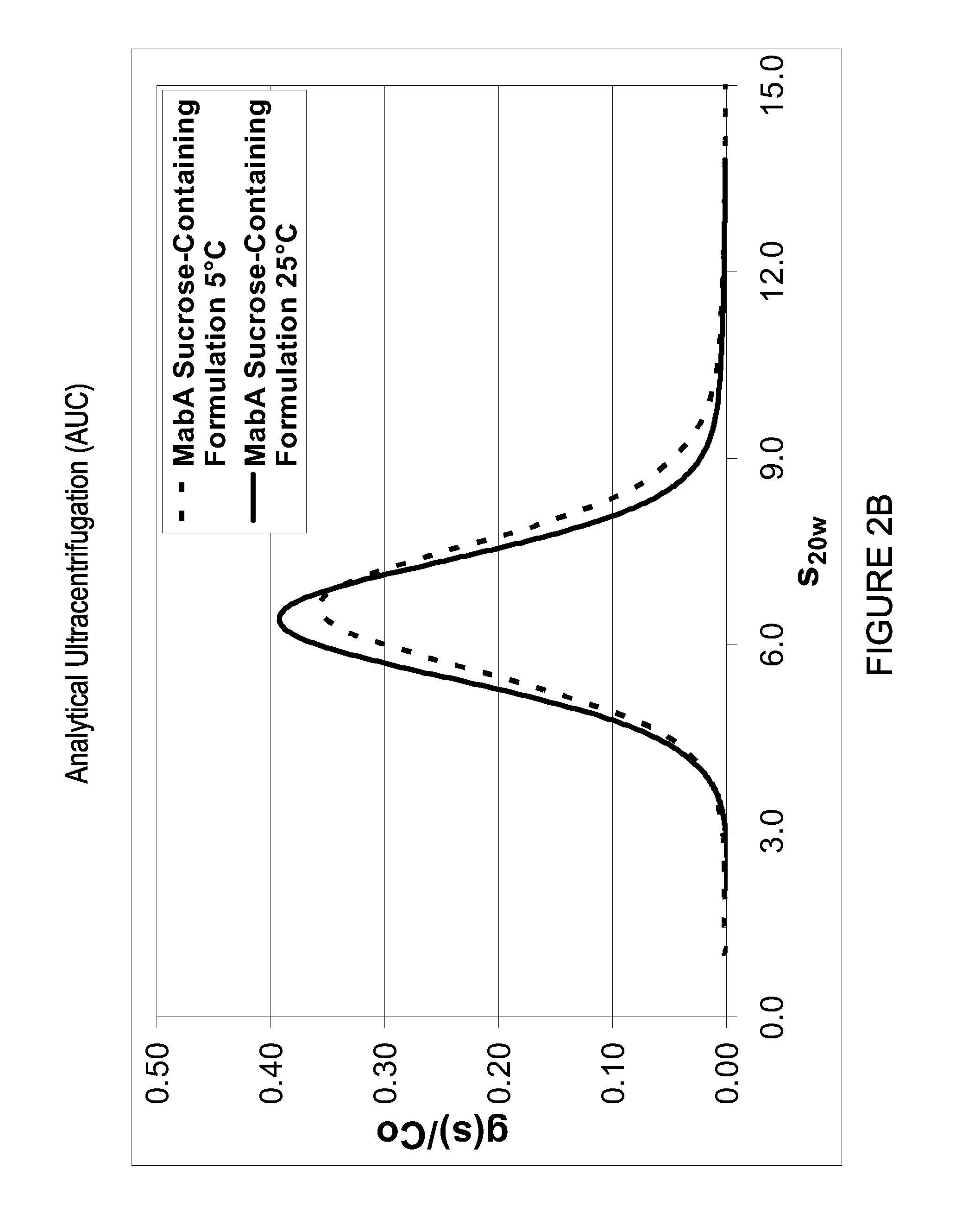Antibody formulations
a technology of antibody and formulation, applied in the field of antibody formulation, can solve the problem that the liquid formulation is not suitable for lyophilization, and achieve the effect of reducing the reversible self-association
- Summary
- Abstract
- Description
- Claims
- Application Information
AI Technical Summary
Benefits of technology
Problems solved by technology
Method used
Image
Examples
example 1
Initial Characterization of the RSA Tendency of MabA in an Initial Formulation—RSA of MabA is Dependent on Temperature and / or Concentration
[0242]RSA tendency of MabA in an initial, non-sucrose containing formulation was evaluated at an antibody concentration of 10 mg / ml. In addition to antibody, the initial formulation contained, in water, 50 mM sodium-acetate, 100 mM NaCl, 0.01% (w / v) PS80, pH 5.5. At 2-8° C. and at a protein concentration of 10 mg / ml, a shoulder on the leading edge of the monomer peak was detected by HPSEC. The HPSEC shoulder was not observed after equilibration of MabA for about 80 minutes at 23-27° C. or following dilution to a protein concentration of about 4 mg / ml. Characterization studies, including analytical ultracentrifugation (AUC), were performed to further understand the nature of the HPSEC shoulder of MabA. The results are summarized below.
[0243]The size distribution results obtained by AUC are consistent with the HPSEC data showing that shoulder forma...
example 2
Elimination of MabA RSA Tendency in Sucrose-Containing Formulation as Determined by HPSEC, AUC and DLS
MabA Exhibits RSA Tendency in Various Formulations Including the Acetate / Salt Formulation Under Cold Temperature Storage Conditions
[0250]The RSA tendency of MabA in an initial, non-sucrose-containing, acetate / salt formulation (10 mg / ml MabA, 50 mM Na-acetate, 100 mM NaC1, 0.01% (w / v) PS80, pH 5.5) was evaluated by high performance size exclusion chromatography (HPSEC) at standard storage temperature (at about 2-8° C.) and at room temperature (at about 23-27° C.). As shown in FIG. 1A, RSA tendency of MabA is pronounced at about 2-8° C., as indicated by a leading edge shoulder on the monomer peak. Such a leading edge shoulder was not detected when tested at 25° C., indicating that MabA behaves differently at 2-8° C. as compared at 23-27° C. More specifically, MabA exhibits significant RSA tendency at 2-8° C. that is measurable by HPSEC.
[0251]This result regarding the RSA characteristi...
example 3
RSA of MabA is Driven by Hydrophobic Interactions and is Correlated to its Hydrodynamic Radius
[0254]RSA is enhanced, in part, “by the exposure of hydrophobic surfaces and the ensuing hydrophobic intermolecular interactions. An evaluation of the interaction between a fluorescent dye (1-anilino-8-naphthalene sulfonate; “ANS”) with MabA illustrates this. ANS binds preferentially to hydrophobic patches on a protein surface, which results in an increase in ANS fluorescence intensity. Thus, a decrease in ANS fluorescence intensity is indicative of a decrease in available hydrophobic surfaces and correlates to a decrease in hydrodynamic radius.
[0255]As demonstrated in FIG. 3, the interactions between ANS and hydrophobic surfaces on MabA diminish when assessed in formulations having increased sucrose content. This is consistent with the conclusion that the antibody becomes progressively more compact when present in formulations having increased sucrose concentration, as assessed at 5° C. (e...
PUM
| Property | Measurement | Unit |
|---|---|---|
| concentration | aaaaa | aaaaa |
| pH | aaaaa | aaaaa |
| pH | aaaaa | aaaaa |
Abstract
Description
Claims
Application Information
 Login to View More
Login to View More - R&D
- Intellectual Property
- Life Sciences
- Materials
- Tech Scout
- Unparalleled Data Quality
- Higher Quality Content
- 60% Fewer Hallucinations
Browse by: Latest US Patents, China's latest patents, Technical Efficacy Thesaurus, Application Domain, Technology Topic, Popular Technical Reports.
© 2025 PatSnap. All rights reserved.Legal|Privacy policy|Modern Slavery Act Transparency Statement|Sitemap|About US| Contact US: help@patsnap.com



